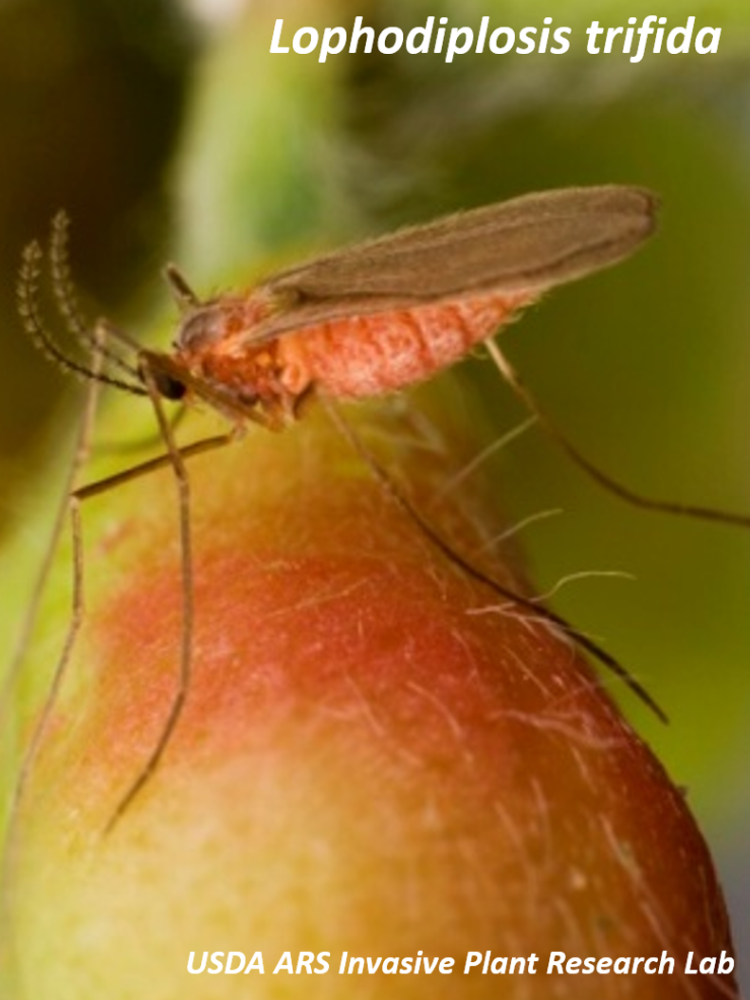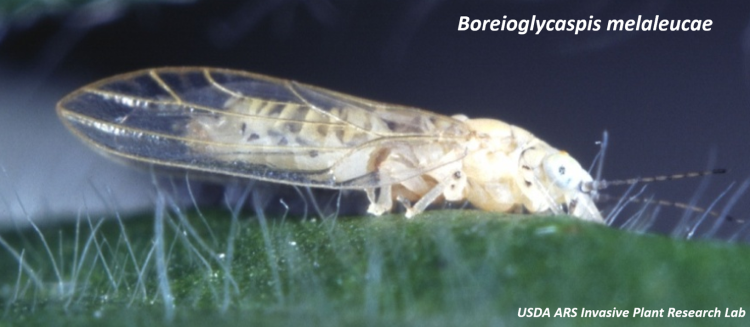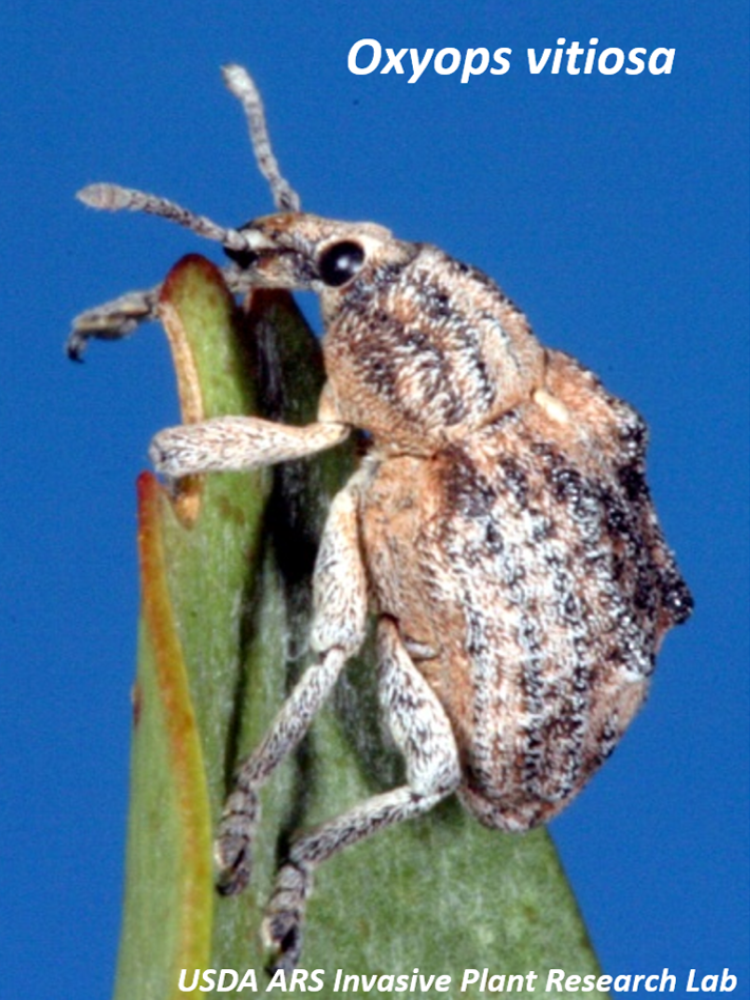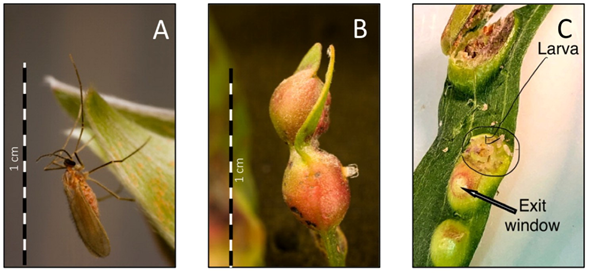| Melaleuca quinquenervia (Melaleuca) |

|

Typical melaleuca density 1996, prior to biocontrol introduction in Site Southern Broward: note dense trees with full foliage
Melaleuca quinquenervia (melaleuca) is an invasive, exotic tree native to Australia that has proliferated in Florida for approximately 100 years and now occupies more than 400,000 acres of wetland, litoral and, to a lesser degree, agricultural, systems in the state. Melaleuca is competitively superior to most, if not all, native plants and rangeland grasses, with infestations resulting in degradation of native wildlife habitats and waterways, including portions of the Everglades National Park, and of the limited grazing lands in South Florida.
Economists and ecologists estimate the value of services provided by those wetlands invaded by melaleuca to be worth $14,785 per hectare per year. Assuming minimal losses of only 1% of these services arising from current melaleuca infestations, the lost value would total nearly $30 million per year. Melaleuca continues to invade new areas causing accelerated degradation of wetlands. The South Florida Water Management District alone spent nearly $22 million to control this tree from 1991 through 2001. In addition, melaleuca threatens the biodiversity of Florida's Everglades which, because it is so unique, has been designated a World Heritage ecosystem by UNESCO, an International Biosphere Reserve, and is on the RAMSAR list of wetland sites of international importance. Effective and long-term management of this invasive tree is obviously very important for the economy and ecology of the state.


To date, three biological control agents were developed and released on melaleuca; all are now established and widespread throughout the melaleuca range in Florida.
- Oxyops vitiosa, a foliage-feeding weevil released in 1997
- Boreioglycaspis melaleucae, a sap-feeding psyllid released in 2002
- Lophodiplosis trifida, a gall forming midge released in 2008

Attack by these agents has had the following impacts on this weedy tree:
- Up to 99% reduction in seed production.
- Greater than 85% reduction in the number of seed bearing trees.
- Tree biomass reduced by up to 77%.
- Field populations have become up to 84% less dense.
- Plant growth rate reduced by 50%.
- Trees are now 36.5% more susceptible to fire.
- Trees are now 30-40% more susceptible to herbicides.
- Native plant diversity has increased by up to four fold.

BIOCONTROL ABSENT

BIOCONTROL PRESENT
IPRL’S NEWEST BIOLOGICAL CONTROL AGENT FOR MELALEUCA IN 2022
An integrated management approach for melaleuca control that includes chemical, mechanical and biological control has yielded widely successful results. Melaleuca now occupies only 10–12% of the land cover it did at its maximum (Rodgers et al., 2014). Despite this decrease, persistent infestations are still present in critically important areas such as the northern and eastern Everglades areas where water levels are perennially high and O. vitiosa has low populations, likely due to its habit of soil pupation. To improve the impact of melaleuca biological control in these specific areas, we selected from our extensive surveys an agent that would attack and complete its lifecycle in the foliage. Lophodiplosis indentata Gagné (Diptera: Cecidomyiidae) is a leaf-galling midge that is closely related to L. trifida. Like L. trifida, L. indentata is restricted to melaleuca trees in Australia and produces a bi-chambered pea-gall on newly emerged foliage.
Below is a picture of this newest biological control agent which IPRL received approval for release, to further improve the control of Melaleuca.

(A) Lophodiplosis indentata (female with newly oviposited eggs on melaleuca foliage) (Photo credit: S. Wright).
(B) Mature pea gall with emergent adult (Photo credit: S. Wright).
(C) Dissected galls showing larva within the gall and developing exit windows (Photo credit: M. Smith).
